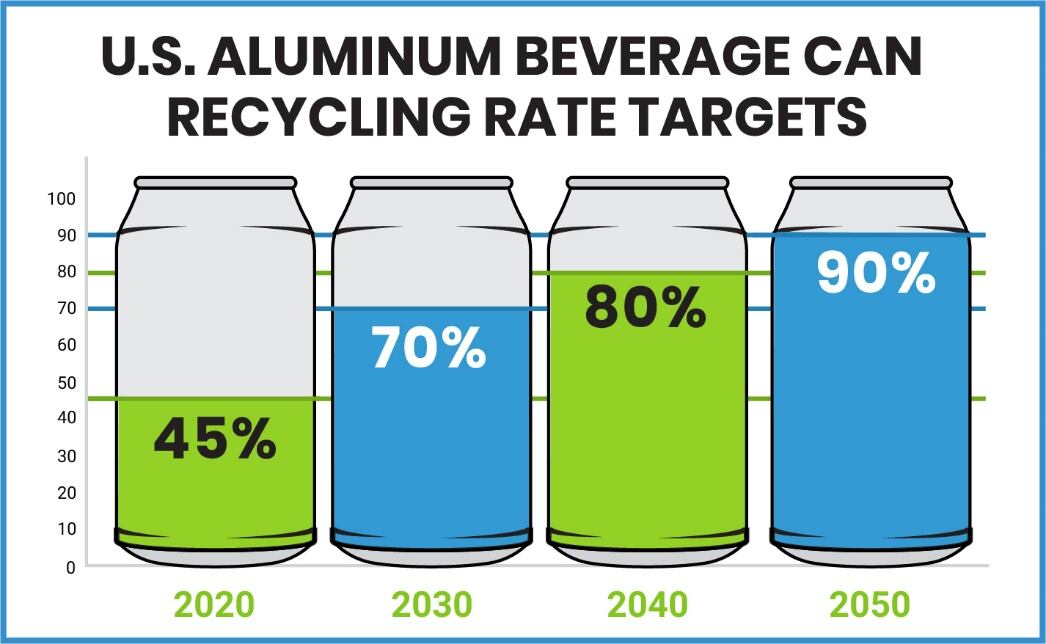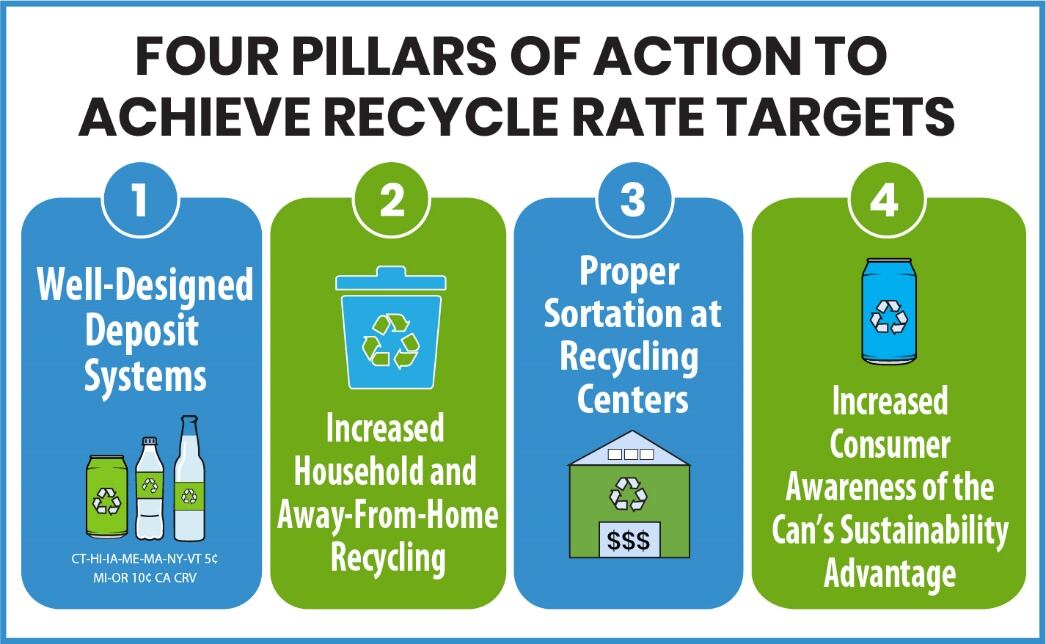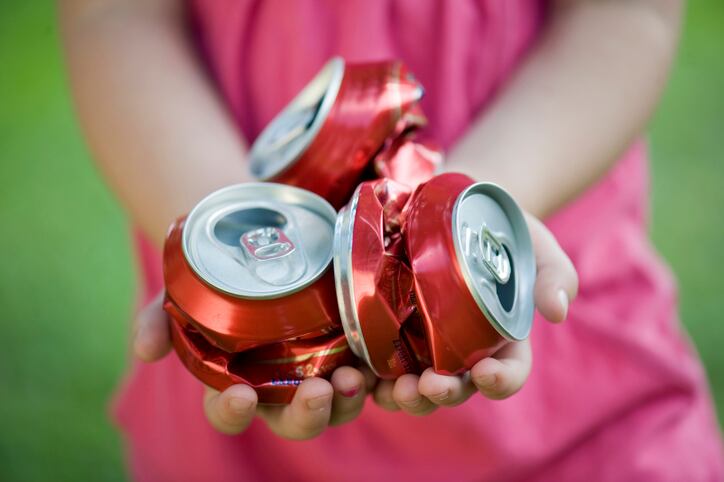This week the Can Manufacturers Institute (CMI) has published its roadmap for reaching its targets: calling for well-designed deposit systems; increased recycling both in home and out of home; improved sorting at recycling centers, and increased consumer awareness.
Can manufacturers champion the circular economy potential of the metal can: with each can having the potential to be recycled repeatedly - without loss of quality - into new cans or other products (nearly 90,000 cans are recycled a minute in the US, and around 93% of those are turned into new cans).
The more cans that are recycled, the more energy is saved, fewer greenhouse gases are emitted (around an 80% reduction compared to a virgin can) and the more revenue and jobs are created in the recycling system, according to the CMI, the national trade association for the metal can manufacturing industry and suppliers in the US.
But the problem is that not enough cans are currently recycled: meaning they don’t complete this circular journey.
The CMI claims that the aluminum beverage can is the most recycled beverage container in the US with a 45% recycling rate in 2020 (compared to 39.6% for glass and 20.3% for plastic bottles).
It wants to see that rise to 70% by the end of the decade before rising to 80% in 2040 and 90% in 2050.
Meeting these targets will not be easy but can have a significant impact, says the organization.

For example, if the recycling rate had reached 70% in 2020, that would have meant 25.6 billion extra recycled cans, more than $400m generated in revenue for the US recycling system, and energy savings that would power more than 1 million homes for a year.
Deposit return systems
The aluminum beverage can is the ‘ideal recyclable material’ thanks to a relatively high recycling rate, high economic value, and ability to be recycled in large numbers with existing technology, says the CMI.
Cans are currently made with around 27% primary aluminum and 73% recycled material. They could be made with up to 90% recycled content.
“The aluminum beverage can industry has modeled out how it can achieve its ambitious recycling rate targets both with a national beverage container deposit system or with new, well-designed deposit systems in certain states along with other recycling system advancements.
"New, well-designed beverage container deposit systems are one of four pillars of action to attain the target rates because it is critical.
"The other three pillars that will also support progress toward the targets are: increase and improve household and away from home recycling, reduce missorting of aluminum beverage cans at material recovery facilities, and increase consumer understanding of the can’s sustainability advantages.”

Deposit systems can have the greatest impact, with the potential to recycle an extra 50 billion cans, according to the CMI.
“The simplest way to achieve the targets would be with a national DRS. It’s clear that a national deposit system would reach at least the initial target since the average recycling rate of aluminum beverage cans sold with a refundable deposit is 77%. Notably, that 77% average is with some states having sub-optimal DRS with features such as only a 5-cent deposit. Systems with higher deposit values have higher redemption rates given the greater financial incentive to redeem the container. U.S. states and countries with a 10-cent deposit often approach or exceed 90% redemption.
“A more difficult but feasible pathway exists for achieving the can industry’s recycling rate targets in the absence of a national deposit system. Central to this pathway is a new, well-designed DRS in certain states.”
In late 2021, CMI and The Aluminum Association (AA) formed a Joint Deposits Task Force with representatives from aluminum supplier and can manufacturer member companies to guide the industry’s efforts to stimulate new deposit systems.
“The can industry will actively advocate in key states where a relatively substantial number of cans are lost to landfill and the politics are favorable for instituting a new DRS. For example, one state that the can industry is actively involved in is Illinois where it has hired an advocate in the state to support its local push. CMI modeling shows that if Illinois instituted a deposit system that delivered recovery rates similar to a state with a ten-cent deposit like Michigan, that alone would raise the national aluminum beverage can recycling rate 3 percentage points. CMI is working with like-minded, strategic partners to press for well-designed DRS.”
Meanwhile, increased recycling in households and away-from home would boost recycling rates by some 23 billion cans, estimates the CMI. Proper sortation at recycling centers would allow an extra 3.5 billion cans to be recycled.
Increased consumer awareness then needs to be incorporated with the other actions.
“The aluminum beverage can industry will engage in communications activities that augment the initiatives in the other three pillars. This could include a consumer communications campaign that emphasizes the sustainability advantages of cans within the communities that the can industry has invested in can capture equipment at local MRFs [Material Recovery Facility]. The results would lead to more people in those communities knowing to recycle their cans and then the MRF is set up to correctly sort those cans.
"Another potential approach is creating a convenient place to redeem cans for cash in an area that currently lacks recycling access and then promoting locally the new location to sell cans for cash. The intended result would be to get more UBCs from inside and outside the home recycled in an area that offers no recycling.
“The potential can recovery available from communicating the can’s sustainability advantages is the most difficult to quantify. The aluminum beverage can industry believes that if consumers understood the impact their choice to recycle cans has that they would be more consistent can recyclers and that those changes would add up to billions more cans recycled.”
The report can be found in full here.

